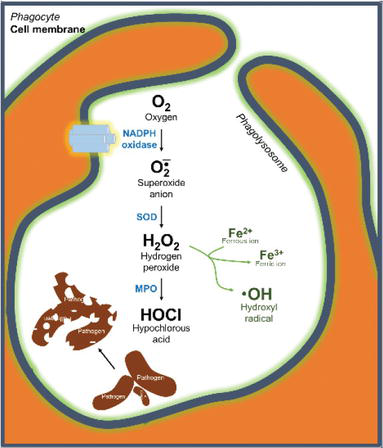Hereditary Angioedema or C1 esterase inhibitor deficiency: It is an AD disorder characterized by recurrent episodes of severe swelling or angioedema affecting the limbs, face, intestinal tract and airway, precipitated by trauma or stress, sometimes without a trigger. It presents with severe abdominal pain, nausea, and vomiting, airway obstruction and erythema marginatum. Mutations in SERPING1 and F12 genes are seen. Deceased levels or abnormal activity of C1 inhibitor occurs leading to increased bradykinin levels which promotes inflammation and edema.
PNH or paroxysmal nocturnal hemoglobinuria: It is an acquired disorder characterized by paroxysmal episodes of hemolysis and hemoglobinuria, which may be triggered by stresses on the body, such as infections or physical exertion. Relatively lower oxygen levels during sleep predispose to hemolysis. Hemoglobinuria presents as passing brown or cola colored urine, which is most noticeable in the morning, upon passing urine that has accumulated during the night (nocturnal). Other symptoms include fatigue, weakness, pallor, shortness of breath, tachycardia, recurrent infections due to leukopenia, recurrent thrombosis or rarely, hemorrhage and increased risk of leukemia.
Mutations in the PIGA gene are seen in hematopoietic stem cells. The PIGA gene codes for a protein called phosphatidylinositol glycan class A, which is required for the synthesis of GPI that functions as a cell membrane anchor. DAF (decay accelerating factor) or CD55 and CD59 are anchored on the RBC surface with the help of GPI. CD55 and CD59 protect the RBCs from complement mediated lysis. Deficiency in these two molecules occurs in PNH, leading to an increased activation of complement and hemolysis. RBCs, WBCs and platelets are mainly affected.
Deficiency of phagocytic cells
Chediak-Higashi syndrome: It is an AR disorder characterized by recurrent pyogenic infections, oculocutaneous albinism, nystagmus, photophobia, bleeding tendencies, seizures, ataxia and peripheral neuropathy. Chediak-Higashi syndrome is caused by mutations in the LYST gene which provides instructions for making a protein known as the lysosomal trafficking regulator that plays a role in the trafficking of materials into lysosomes. Neutrophil lysosomes fail to fuse with phagosomes. Superoxide levels are normal. Large granular inclusions are seen in cells. Melanin is trapped within large melanosomes causing albinism.
Chronic granulomatous disease or CGD: It is an X linked, sometimes AD disorder characterized by increased infections with catalase positive bacteria like S.aureus, gram negative enteric bacteria like Serratia and Burkholderia and Aspergillus fumigatus. It is caused by a defect in intracellular microbicidal activity of neutrophils due to a lack of NADPH Oxidase. No H2O2 or superoxides are formed (no oxidative burst). Granulomas are seen in tissues which may obstruct the GI Tract or bladder. Pneumonia, fungal infections, skin, liver and lymph node lesions are seen. It is diagnosed by NBT or nitroblue tetrazolium test which will be negative due to absence of respiratory burst ( phagocytic granules do not turn deep blue), or by dichlorofluorescein assay by flow cytometry. Cure is an allogeneic hematopoietic stem cell transplantation.

Leukocyte adhesion deficiency is discussed in another chapter.
Sign up for free to take 2 quiz questions on this topic